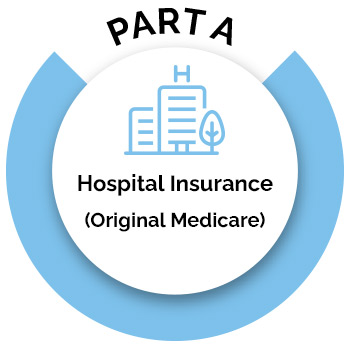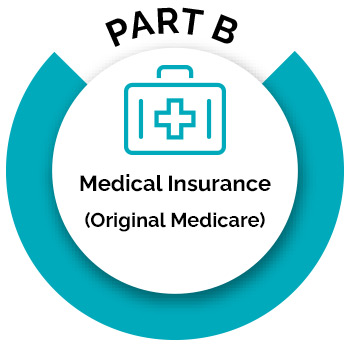Medicare is a federal health insurance program that affects millions of seniors every year. It makes healthcare coverage possible for adults 65 and older as well as younger individuals with disabilities.
And although 62 million Americans are currently enrolled in Medicare, very few actually truly understand it and all its layers. Medicare on its own can be confusing, but once you start talking about its different parts – A, B, C, and D – it’s enough to overwhelm even those who are insurance savvy.
Breaking Down Medicare
Selecting the right benefits to cover services you specifically need is crucial in keeping your costs low. Not taking the time to fully understand what you’re signing up for can result in higher premiums, out-of-pocket drug costs, and even paying more in taxes.
Original Medicare and Medicare Advantage are terms used when discussing the healthcare program. Simply put, Original Medicare includes Part A and Part B. Medicare Advantage is an “all in one” alternative known as Part C. There’s also Part D that you can add to Original Medicare as a type of supplemental coverage.
Let’s take a closer look at each individual part and what it covers.
What is Part A?
Part A is what’s considered hospital insurance. In a nutshell, it covers hospital visits, skilled nursing facility care, nursing home care, hospice care, and home health care.
So, for example, if you were admitted into the hospital, Part A would help cover the cost of common expenses, such as a semi-private room, meals, and nurse care.
If you have turned 65 and you or your spouse worked and paid Medicare taxes for at least 10 years, you are eligible for Medicare Part A. Most eligible individuals do not have to pay premiums for Part A; however, there is a deductible and a coinsurance responsibility for beneficiaries.
Even though Part A is “hospital coverage,” not everything that happens at the hospital falls under that umbrella. For example, some hospital care and procedures ordered by physicians fall under Part B.

What is Part B?
Part B can be compared to what we know as basic health insurance. It covers outpatient services that are medically necessary, such as doctor visits, lab work, diagnostic testing, surgeries, chemotherapy, preventive treatment, and most other ambulatory services.
Part B does have a premium that beneficiaries are responsible for. But just like with other types of insurance, prices vary depending on several factors, including income and marital status.
You don’t have to purchase Part B, but together, Part A and Part B make up Original Medicare. Most individuals sign up for parts A and B when applying for social security.

What is Part C?
Part C is what’s referred to as Medicare Advantage. It’s different from Part A and B in that it’s an actual comprehensive Medicare-approved health plan that you purchase from a private insurance company. Coverage includes Part A and B benefits, along with some Part D (more on that later). In addition, other preventive services such as vision, dental, and hearing are also included. It’s basically all the parts rolled into one convenient plan.
With Part C, you have a network of physicians within your service area that you can select from for services. This helps to lower premiums and limit your out-of-pocket expenses. In addition, most Part C plans help keep you from having to run all over the place for treatment because you must stay in-network.
Unlike Original Medicare, where you get what you get, Medicare Advantage allows you to pick a specific insurance plan from a provider that caters to your particular needs.

What is Part D?
Part D is entirely optional and must be purchased separately from a private insurance carrier. It is a federal program that provides prescription drug coverage to individuals who receive Original Medicare.
With Part D, you will have a monthly premium, and in return, you will receive significantly lower copays on medicine and prescription drugs. If you receive Part A and Part B, Part D is a separate plan; however, Medicare Advantage plans have a built-in drug plan so Part D is not necessary.

What Medicare Parts Do I Need?
When it comes to what coverage you need, it’s entirely personal and varies from person to person. There is no one-plan-fits-all, and there are pros and cons to each part.
One thing to note, however, is Medicare enrollment eligibility for the various parts and plans changes depending on your age, what you are currently enrolled in, and whether you have moved or had a life change. There are only certain times during the year when you can change/add plans or switch from Original Medicare to Medicare Advantage.
Need Help? Contact SaludVIP Today!
If you’re still confused about Medicare and what parts you need, contact us at SaludVIP, and we’ll be happy to answer all your questions and discuss your options.

